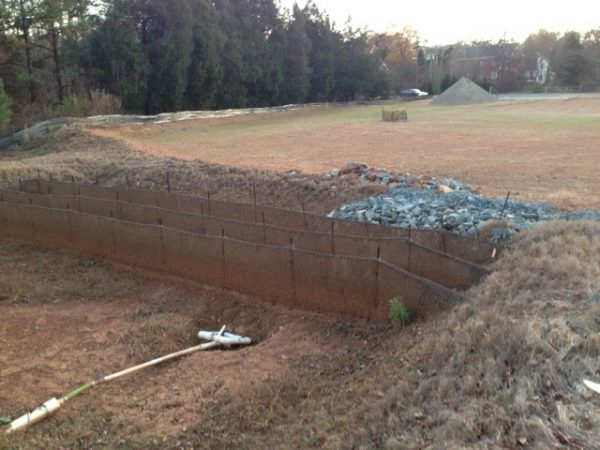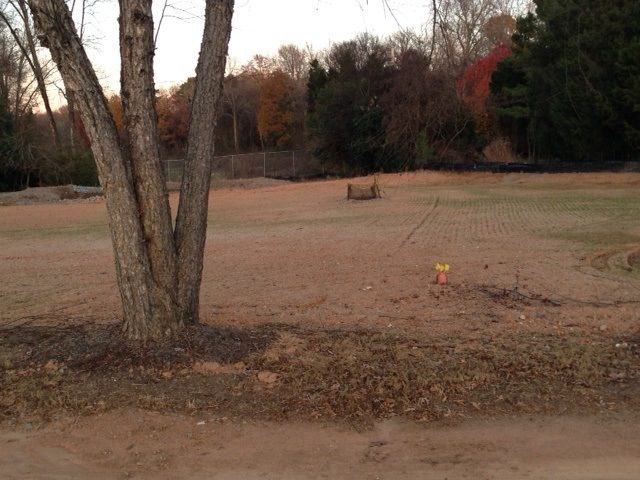Flood-prone site of former temple, school now awaits storm waters

On Nov. 11, 1957, a white separatist organization failed in its attempt to destroy Charlotte’s Temple Beth El, now the largest reform congregation in the Carolinas, with dynamite.
Last month however, almost 56 years later, the building was finally destroyed – not as a malicious act but as part of Mecklenburg County’s floodplain acquisition program.
The prominent site 2.3-acre site at Providence Road and Briar Creek, along one of Charlotte’s major commuter corridors, lies in a floodplain and has a history of flooding. Demolition was completed in October; the county will now create a detention basin to hold and treat storm water runoff.
The county paid $1.525 million to buy the site in June 2011 from Dore Academy, now known as the John Crosland School, which works with students with learning differences. The school purchased the property from Temple Beth El in 1990.
It was in 1948, a month after Israel declared its independence, that the Temple Beth El congregation broke ground on the first building at the Providence Road site. Previously, they had met above Dowtin’s Grocery Store at East Morehead Street and Kings Drive. Six years later, ground was broken for the site’s second building, Temple Beth El’s Religious School.
On Nov. 11, 1957, the failed bombing of Temple Beth El was only the first of many attacks on Jewish institutions across the South. But Temple Beth El continued, building the site’s third and final building, a fellowship hall, in 1961.
When the congregation moved to its current location farther out Providence Road at Shalom Park, the site was sold to Dore Academy.
In 2008 the school faced flooding from heavy rains.
“They abandoned all the lower classrooms (which were most flood-prone) and were looking for a better place to grow the school,” Tim Trautman, Charlotte-Mecklenburg Storm Water Services program manager, said in an email interview. “Based upon severity of flooding and ongoing flood losses, we agreed to pursue grant funds to acquire and demolish the buildings.”
A pre-disaster mitigation grant from the Federal Emergency Management Agency covered 75 percent of the cost, while local storm water fees covered the remainder.
The county leased the site back to the academy for 15 months while the school worked to find and fund a new location.
“There was no other viable fix to the flooding along Briar Creek,” Trautman said. “Now the school is in a safe location, future flood damage will be avoided, and the lot will be able to safely store floodwater.”
Before the demolition, the site was used by police for SWAT team training. Habitat for Humanity of Charlotte salvaged $15,000 worth of items, and the county recycled concrete and steel.
And the deed to the property now ensures that the site will remain open space in perpetuity. With the storm water ponds that will be built, the site will be able to flood without further damage to property, storing floodwaters and helping reduce pollution. Storm runoff can contain contaminants from oil and gas drippings, antifreeze, excess fertilizer and trash. In the detention pond, contaminants settle to the bottom, and cleaner water is slowly released into Briar Creek.
In the long term, the site may be used for recreational purposes as part of the planned Briar Creek Greenway corridor.

Corey Conner wrote is article while interning at the UNC Charlotte Urban Institute in 2014 as a student at UNC Charlotte.
Corey Conner